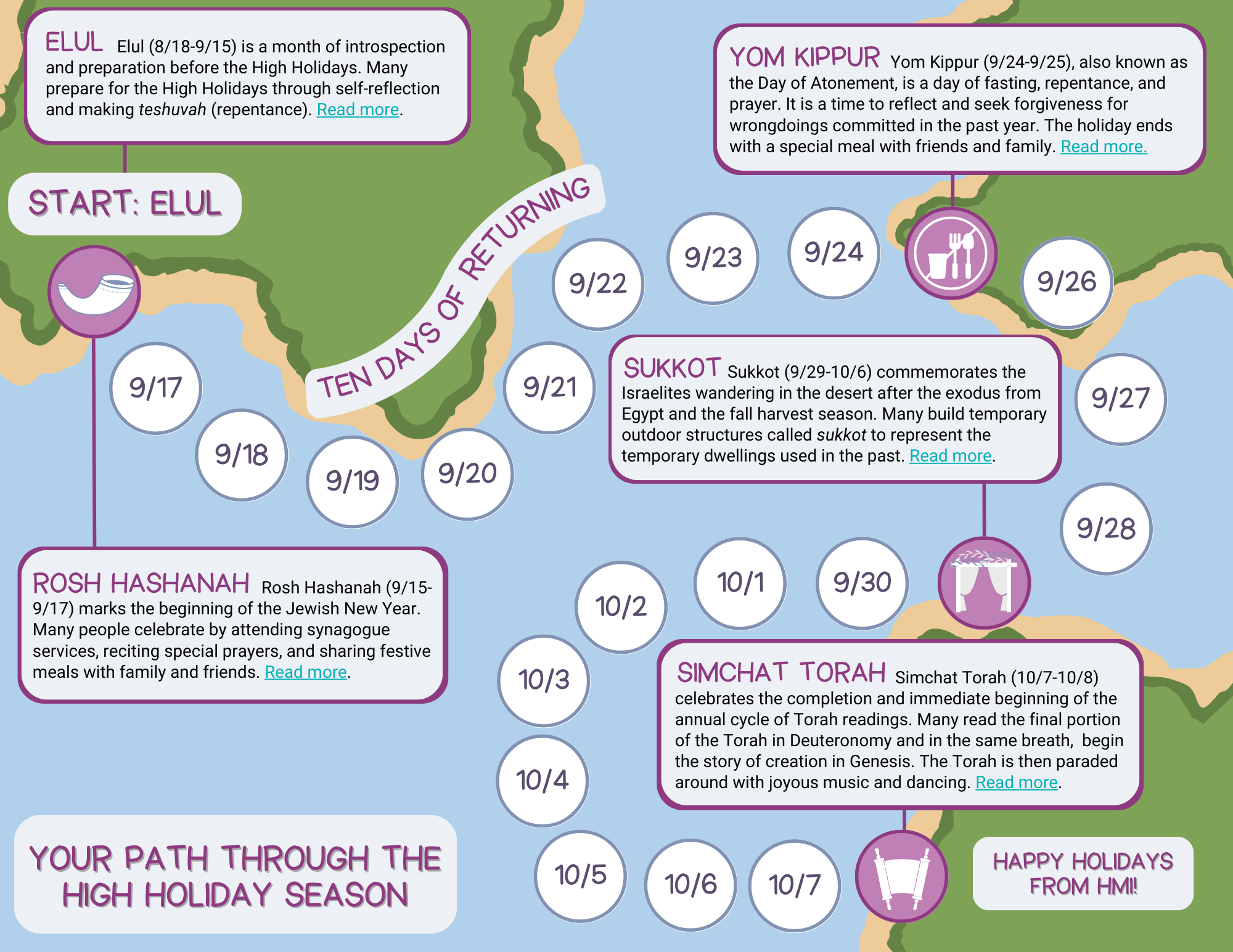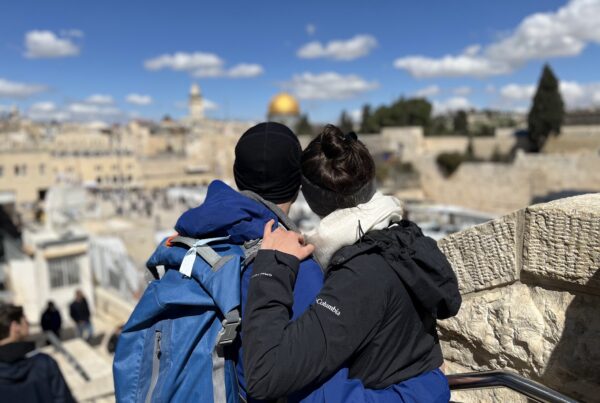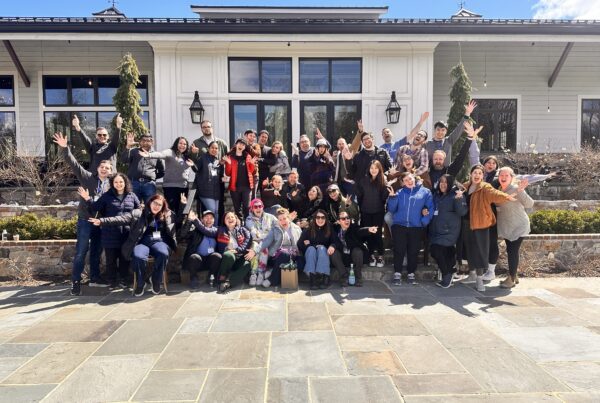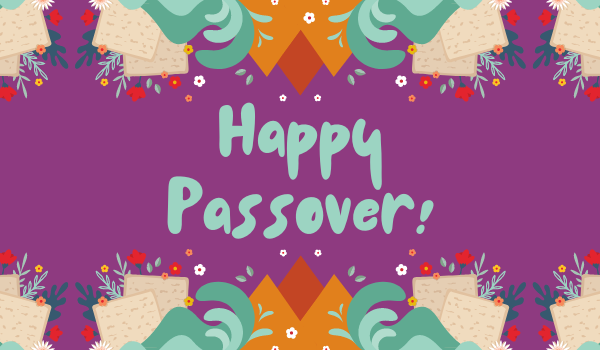High Holidays 2023/5784 (Hebrew calendar year)
Whether you grew up dunking apples in honey each year or this is the first time you’ve Googled “Simchat Torah,” the High Holidays are a season with all kinds of opportunities for reflection, connection, and gathering. Fun fact: they’re also the most widely-observed Jewish holidays on the calendar. And if you’re looking for ways to celebrate, HMI has got you covered!
Start by exploring this handy Path Through the High Holidays to get the 101 overview on each of the holidays – including Elul, Rosh Hashanah, The Ten Days of Returning, Yom Kippur, Sukkot, and Simchat Torah!
Looking for more? Read on to get the download on each holiday, along with different ways to mark them.
*Note – this Alumni Micro Grant and the per person funding are only available to Honeymoon Israel alumni.
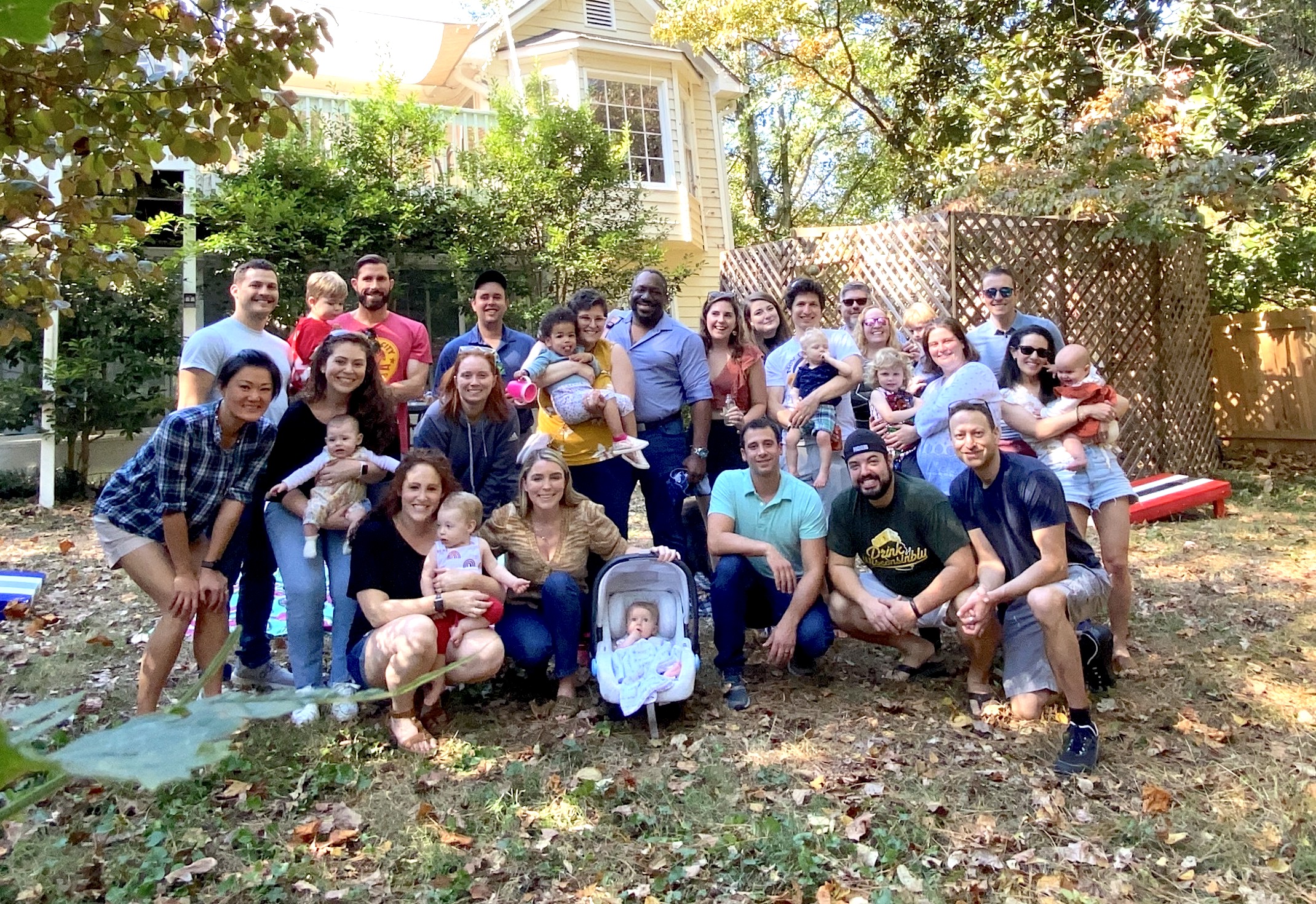
Read on to find something that helps you bring the holidays into your home and into your soul. Celebrating with kids? Our friends at PJ Library have lots of great family-friendly resources for the High Holidays. We’ve included more of our favorites below, along with other resources to help you make this year’s High Holidays relatable and enjoyable for you and yours.
Elul
Rosh Hashanah
One of the most unique rituals of Rosh Hashanah is to hear the sounding of the shofar (a ram’s horn), which serves as a centuries old alarm clock, giving us a wake-up call for this holy season. It acts as a reminder not to walk through life half-asleep and to take a good look at our lives in this moment. It’s also customary to eat apples dipped in honey to signify the hope for a sweet new year, as well as round challah, which represents the cyclical nature of the year and the continuous cycle of life.
Looking for more meaning this Rosh Hashanah? Find more guidance here.
Kids love baking round challah – check out this great recipe from PJ Library!
Ten Days of Returning
Looking for more guidance? Check out 10Q’s quick and easy guided reflection.
Need something kid-friendly? We love PJ Library’s Family Conversations guide.
Ritual to Know: Tashlich – Tashlich translates to “casting off,” reflecting the central action of this ancient Jewish ritual. If we can’t apologize to someone we’ve hurt, or we’ve done something to hurt ourselves, tashlich offers a physical ritual to help cast off that spiritual baggage. During tashlich, we go near a body of flowing water with a piece of bread or a biodegradable item, reflect on past mistakes, and express remorse. Then we ceremoniously cast the bread or symbolic item into the water, allowing it to be carried away. Tashlich can be performed by an ocean, river, stream, or even your bathtub!
Yom Kippur
When’s Yom Kippur this year? Sundown on Sunday, September 24 – sundown on Monday, September 25
How can we celebrate? Yom Kippur often includes a 25-hour fast, which means abstaining from food and drink. The fast is an attempt to redirect focus from our physical needs and instead to concentrate on the spiritual aspects of the day. The holiday ends with a special “break-fast” meal with friends and family.
We recognize that fasting isn’t for everyone. Want an alternative? Check out our self-guided tashlich ritual.
One of the stories read on Yom Kippur is Jonah. Teach kids about forgiveness this year by reading the Story of Jonah with PJ Library.
Phrase to Know: The Book of Life – One term you might hear during the holidays is the idea of the Book of Life. It’s the concept that God has a book with the names of those who will thrive in the next year, and that we can alter our fate based on actions of repentance and good deeds during the Ten Days of Returning. The book is then “sealed” on Yom Kippur. It’s common to hear someone offer you the greeting, “May you be inscribed and sealed for a good year.”
Sukkot
When’s Sukkot this year? Sundown on Friday, September 29 – sundown on Friday, October 6
How can we celebrate? Sukkot is traditionally celebrated at home by building a sukkah, a temporary outdoor structure with three walls and a roof that allows us to see the stars – basically an awesome fort we get to build in our backyards! Then, we decorate the sukkah with fruits, vegetables, and other ornaments to celebrate the fall harvest. People spend as much time as possible in their sukkah, enjoying meals and even sleeping in them – Sukkot camp-out, anyone? The custom of inviting ushpizin (guests) into your sukkah emphasizes the importance of hospitality. A perfect opportunity to reconnect with your HMI friends and invite them to gather under the stars with you.
Looking for a simple Sukkot strategy? Check out our complete Sukkot guide that includes easy sukkah building ideas (even if you live in an apartment!) and an etrog cocktail recipe.
Words to Know: Etrog and Lulav – An etrog is a yellow citrus fruit that resembles a large lemon. The etrog is gathered along with the lulav and waved during Sukkot as an expression of the harvest and its blessings. A lulav is a bundle of branches consisting of a palm, myrtle, and willow branches. They are bound together as the lulav and, along with the etrog, make up the Four Species of the harvest season.
Simchat Torah
When’s Simchat Torah this year? Sundown on Saturday, October 7 – sundown on Sunday, October 8
How can we celebrate? Simchat Torah is a really happy holiday with lots of singing, eating, and dancing! If you listen to the final reading in a synagogue, you’ll see the rabbi (or whoever is reading the Torah) wind the whole scroll back to the other side to start again at the beginning. The Torah is then paraded around the synagogue, and everyone joins in to celebrate.
Want to try something new this year? Check out a local synagogue for their Simchat Torah service. It’s a joyful service, and particularly fun for young kids. Or host a dance party with your HMI cohort and put together a special playlist!
Word to Know: Torah – The Torah is the first five books of the Hebrew Bible: Genesis, Exodus, Leviticus, Numbers, and Deuteronomy. It is the core text of Jewish tradition and is full of famous stories like creation, and the exodus from Egypt. It’s also full of laws, morals, and ethical teachings. These stories guide Jewish tradition and are a repository of Jewish memory.


